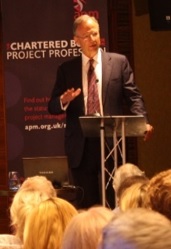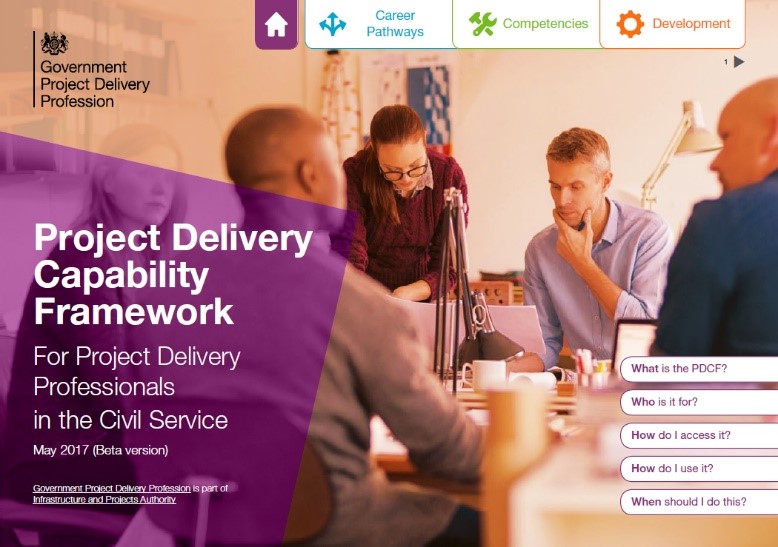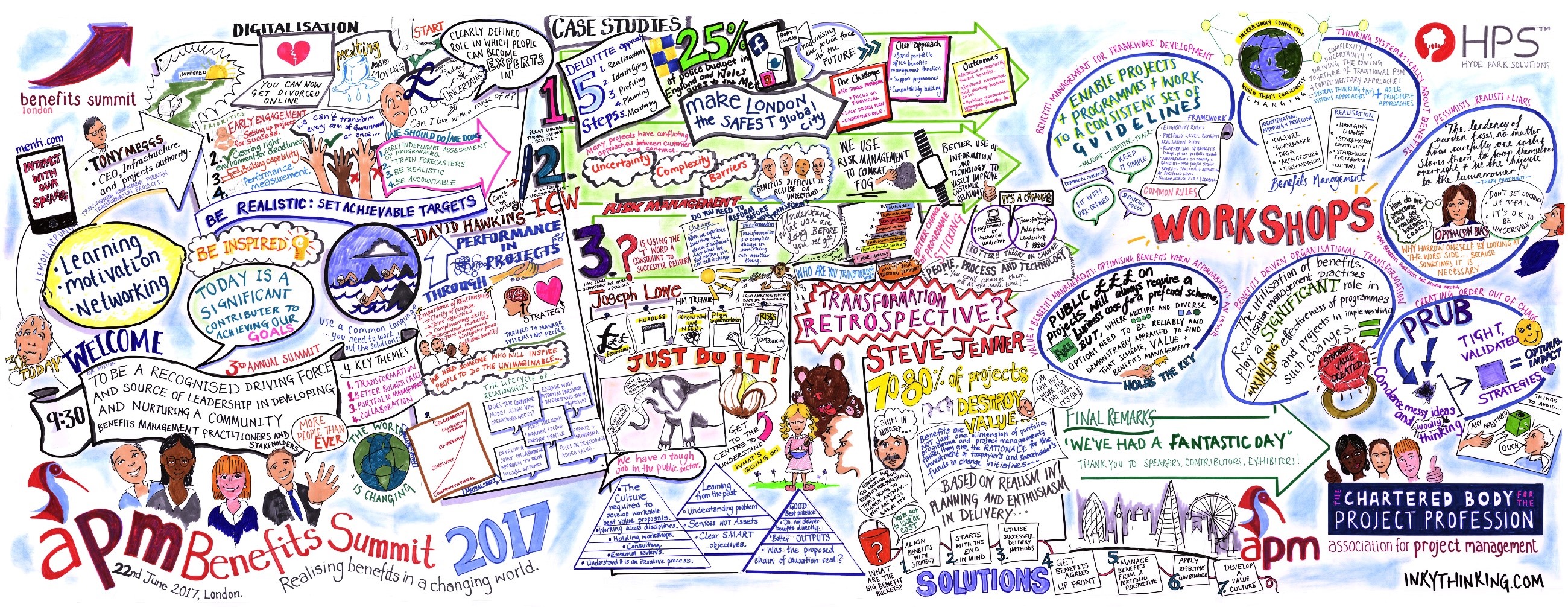Transforming government through transformation projects
Benefits Management and the Government Major Projects Portfolio
Keynote: Tony Meggs, CEO Infrastructure Projects Authority
First Thoughts
Tony Meggs began his delivery by commending the Benefits Management SIG on its choice of themes; especially the focus on transformation.  APM Supporting IPA Goals
APM Supporting IPA Goals
Tony congratulated the APM, which he regards as an important partner, on its achievement of Chartered Status, and emphasised the contribution this would make in professionalising project, programme and portfolio management, including raising the status of the profession within government and in the eyes of external bodies.
As the CEO of the Infrastructure and Projects Authority [IPA], which reports jointly to HM Treasury and the Cabinet Office, Tony is tasked with overseeing and assuring the success of the Government Major Project Portfolio [GMPP]. The IPA operates across all government departments and in four specific sectors; military capability, infrastructure and construction, IT and government transformation and service delivery.
Tony told us that he wanted to focus on three things namely; the challenges faced by government in forecasting benefits, based on what he has seen since joining the IPA, the importance of monitoring and tracking programme performance including benefits, and the need to embrace and understand uncertainty.
In reviewing the GMPP it was evident that, although there were pockets of good practice, there was room for general improvement in Benefits Management. He explained that the IPA now had a good benefits framework for capturing, categorising and measuring benefits in government, including:
- Stakeholder benefits
- Intangible benefits
- Cash releasing benefits
- Non-cash releasing benefits [avoidance]
- Wider economic and social benefits
 Project Delivery Capability Framework
Project Delivery Capability Framework
It is widely acknowledged that defining benefits in transformation projects is complex and difficult, and so Tony was proud to herald the new Project Delivery Capability Framework [PDCF]. Based upon the APM competence framework, the PDCF enables organisations to baseline their capabilities and work to fill gaps and develop capability.
Tony drew specific attention to the Benefits Management role description which provides a detailed specification of the expectations of benefits management practitioners and sets the bar for future capability development [See job titles on page 5 of the PDCF]
The Nature of Government Transformation Programmes
Tony emphasised the two key goals of the Government’s Transformation Strategy, namely:
- Save the government, and thereby the taxpayer, money
- Improve interaction of government services with the public
These changes impact many stakeholders, not only through the way the public interacts with government, but also through technological changes that are being brought to bear and are raising people’s expectations.
Tony informed us that there were now 40 transformation programmes in the GMPP. He cited examples from the courts system, which had been transformed to the point where divorce and even probate can now be administered online.
 Managing Uncertainty
Managing Uncertainty
Tony alluded to the uncertain nature of transformation programmes and asked the question whether we could live with the current level of uncertainty.
He cited the universal human condition of optimism bias and how effective benefits management enabled a more realistic assessment of the benefits to be realised.
Tony referred to HM Treasury Green Book as an example of improved support for the quantification and measurement of benefits realisation. The cost of major programmes was measured in billions of pounds of taxpayers’ money, and the Green Book was instrumental in achieving better benefits forecasts.
Success Drivers
Tony cited four success drivers to achieve successful change outcomes, namely;
- Early engagement – i.e. setting the project up for success right from the start
- Realistic targets – ensuring that forecast programme benefits were rigorously scrutinised
- Creating the environment for success – the new Project Delivery Capability Framework enables an effective and professional delivery capability
- Performance measurement – the need to measure and monitor cost and schedule benefits realisation
In Conclusion
Tony suggested that even the best run projects can fail before they start. A key objective of the IPA is to ensure that each project starts out with a realistic benefit forecast, rigorously assessed before public commitments are made. Essential to this success is early engagement with projects to ensure that key project management activities are undertaken up front.
There is a lot of good practice in government. The IPA’s job is to help transfer good practice across all government departments and programmes.
Tony finished his delivery by asserting that the IPA was committed to working with APM, and others, to improve forecasting and delivery of major projects.

Tony Meggs is the chief executive of the Infrastructure and Projects Authority. He was previously chief executive of the Major Projects Authority.
He is a senior executive with significant experience as a functional leader in the private sector and has led collaborations with several businesses and universities. Tony set up the BP project leadership programme that was the inspiration for the Major Projects Leadership Academy. He also co-chaired a major study at Massachusetts Institute of Technology.
The chief executive leads the Infrastructure and Projects Authority which reports jointly to the Chancellor and the Minister for the Cabinet Office.
Write up by Neil White
Benefits Management SIG Chair
Tony Meggs: Mindmap
Back to Benefits Summit 2017 mainpage
